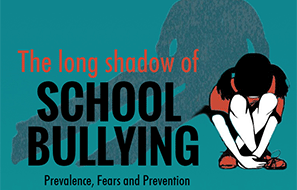'Smog readings in Beijing nothing to be concerned about'
Research showing high levels of nitrogen-containing compounds in the capital's smog should not set off alarm bells, Beijing's Environmental Protection Bureau said.
Zhai Xiaohui, a bureau official, told China Daily on Monday that the concentration of organic compounds found in the smog falls within the normal range.
The government will continuously release readings showing the amount of PM2.5, or particulate matter smaller than 2.5 micrometers in diameter, and other pollutants, Zhai said.
The remarks were in response to the latest research from the Chinese Academy of Sciences, which found a large amount of nitrogen-containing organic compounds in the recent smog that shrouded the capital and neighboring cities.
The compounds are key components of the photochemical smog that shrouded Los Angeles during the 1940s and 1950s, causing hundreds of premature deaths and around 2,000 traffic accidents in a single day in 1954.
Wang Yuesi, who led the research, said it was the first time that a large amount of organic compounds containing nitrogen had been found during winter.
He said scientists are conducting further research on the particulate matter collected and calculating the threat, if any, these pollutants might pose to the public.
Michael Walsh, chairman of the International Council for Clean Transportation, said exposure to nitrogen dioxide might damage the lungs and increase respiratory infections, especially in children and the elderly.
Feng Yongfeng, founder of Green Beagle, an environmental protection NGO in Beijing, said most PM2.5 in the city consists of nitrogen-containing organic compounds, a result of vehicle exhaust.
The nitrogen-containing organic compounds are mainly from exhausts, and account for a large amount of the city's PM2.5 readings, he said.
Feng said the release of the research by the academy is important in satisfying the public's right to be informed.
Despite the large amount of nitrogen-containing organic compounds in the recent smog in the capital, most residents are unaware of how the exposure can impair lung function and increase respiratory infections, especially in senior citizens and children, he said.
"The academy has done a great job in informing the public of the real situation of the city's air quality with detailed readings," he said.
According to the Ministry of Environmental Protection, fireworks and adverse weather conditions resulted in skyrocketing PM2.5 readings and worsening conditions in many cities during Spring Festival.
- Smog disrupts Beijing traffic, flights
- Car emissions contribute to dense smog in Beijing
- Smog lingers despite rain in Beijing
- Fewer firecrackers to reduce smog: minister
- Smog affected more than 800m people: report
- China to suffer more from smog
- Smog crisis generates business opportunities
- Beijing chokes on lingering smog
- Beijing cuckoo's epic migration revealed
- 19 punished for fatal gypsum mine collapse in E China
- China to formally launch system of consular protection volunteers for travellers
- Student survives nine hours without using mobile
- China to boost investment in rural transport to help poverty reduction




















